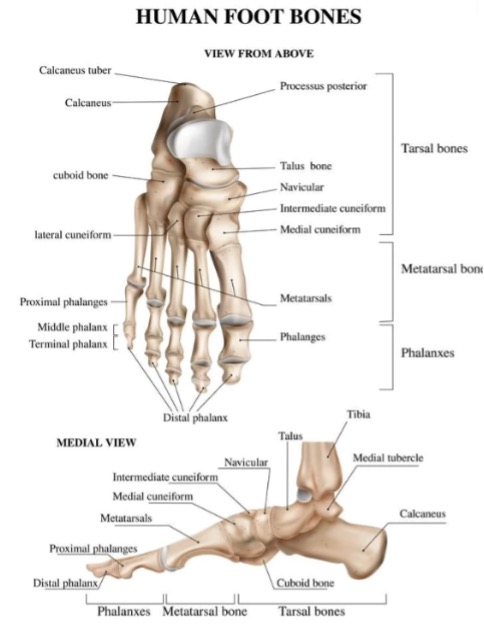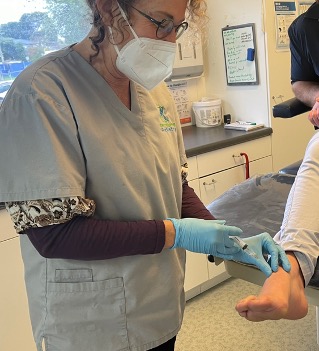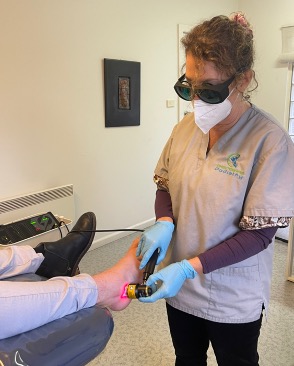joints are held in place and supported by ligaments and an outer covering known as the joint capsule. The inner layer of the joint capsule is called the synovial membrane and this produces the liquid (synovial fluid) that lubricates the joint. Inflammation of the joint capsule can be termed capsulitis or synovitis. Synovitis is generally accompanied by an increased production of synovial fluid causing some swelling of the joint, pain and inflammation.
Whilst this can occur at any joint, in the foot it often occurs at the joints at the head of the second or third toes under the foot or further back into the foot at the base of the metatarsal and cuneiform bones on top of tge foot otherwise known as Lisfranc line.

What causes capsulitis/synovitis?
This is generally due to overload from an associated deformity, poor foot function, inappropriate footwear (e.g. high heels) or physical trauma to the joint. However, certain medical conditions (e.g. rheumatoid arthritis, osteoarthritis) can predispose to inflammation within the joints. The joint capsule irritates and increases it production of joint fluid – synovium causing swelling and inflammation.
Will it get worse?
If there is no overlying system condition as inflammatory arthritis or rheumatoid arthritis, and the other causative factors are treated the condition should resolve. However, if not it will likely continue to progress and cause pain and disability.
What are the common symptoms?
- Pain at the joint site
- Redness around the joint
- Swelling around the joint
- Difficulty in shoes
- Difficulty with walking or sporting activity
- Stiffness in the joint
- The swelling in the joint can irritate the nerve and also cause neuropathic pain.
How is it recognised?
Clinical examination and a detailed history confirmed with ultrasound.

What can I do to reduce the pain?
There are several things that you can do to try and relieve your symptoms :
- Wear good fitting shoes
- Avoid high heels
- Wear a protective pad
- Hot or cold packs may help
- Treat the systemic condition if present
- See a podiatrist
What will a podiatrist do?
If simple measures do not reduce your symptoms, there are other options:
- Advise appropriate shoes
- Advise exercises in some cases
- Consider prescribing orthotics with deflective padding in appropriate cases
- Laser therapy to reduce inflammation and resolve the condition.
- Prolotherapy injection is anabolic, meaning it is pro healing. We do not condone cortisone injections in joints ( as its catabolic – meaning breaks down tissue). There is strong evidence that it leads to cartilage destruction in the knee joint.

Here at Cheltenham Podiatry our podiatrists have many years of technical training with ultrasound .
This condition is easily diagnosed via ultrasound . The causative factors are rectification – improve footwear and orthotics to reduce inefficient loading etc . Often anti-inflammatory treatments are required such as laser and or prolotherapy .
Cheltenham podiatry is a leader in these regenerative treatments.
Prolotherapy injection of dextrose with anaesthetic, and ultrasound guidance ensure a high degree of success.
Alternatively rather than injection therapy, Photobiomodulation can achieve excellent results as a pain free option.

If you know some one suffering this condition, please contact the clinic by phone 95833093 or book online now .
Latest News
Ankle Arthritis
Understanding Ankle Arthritis and Regenerative Treatment Options in Podiatry Ankle[…]


